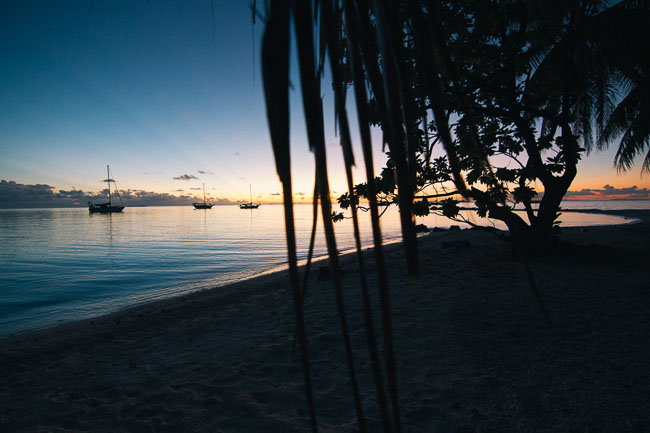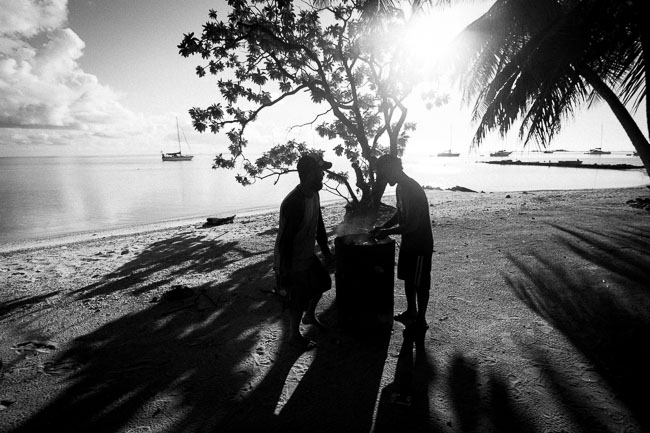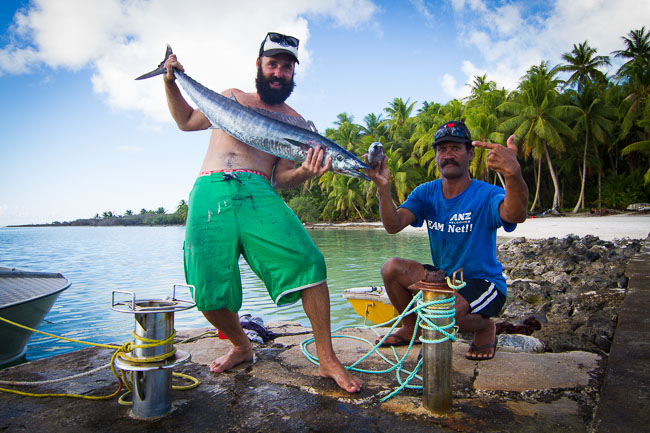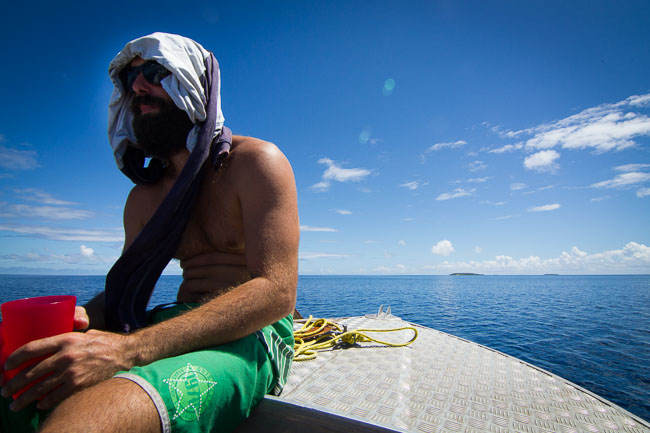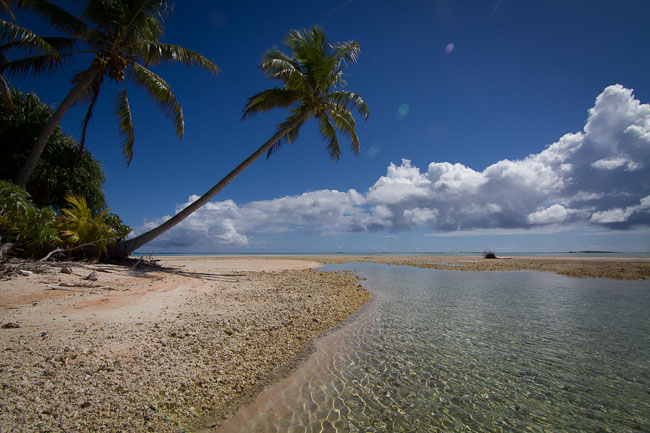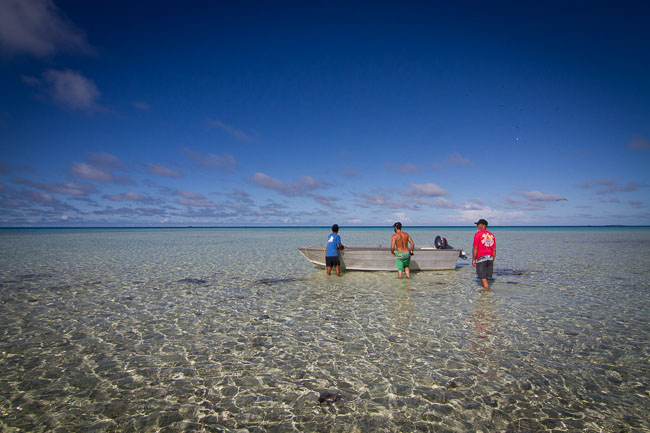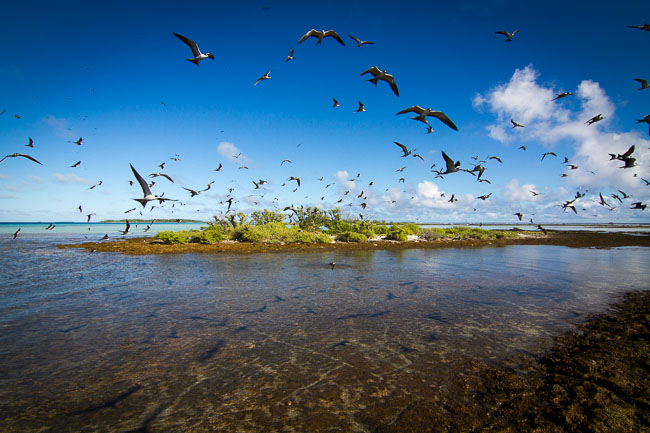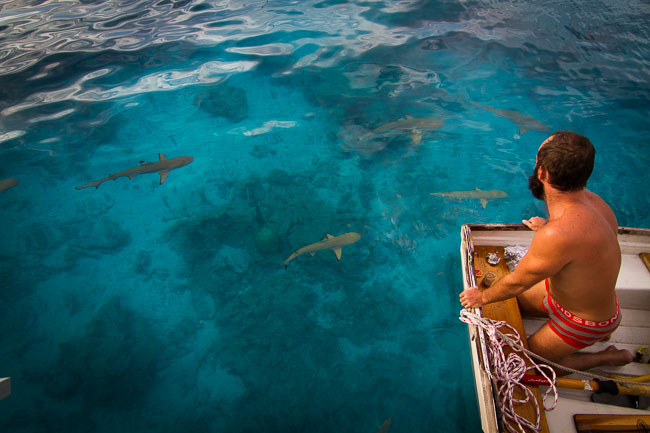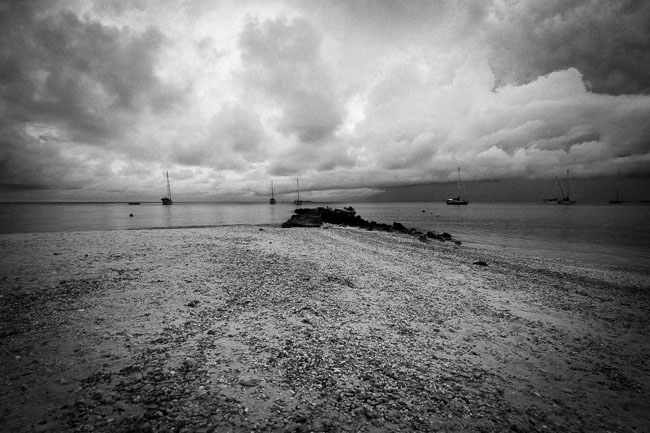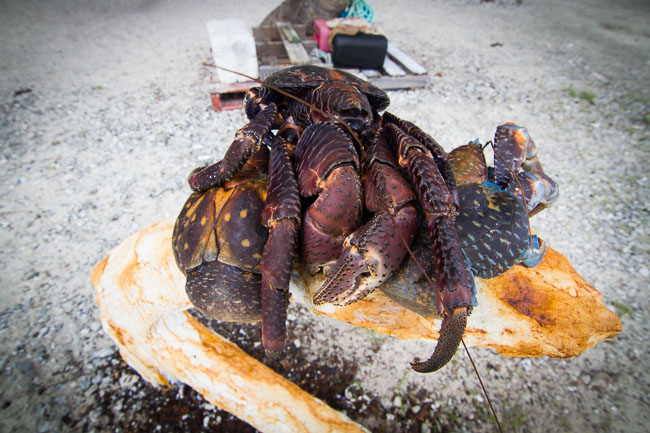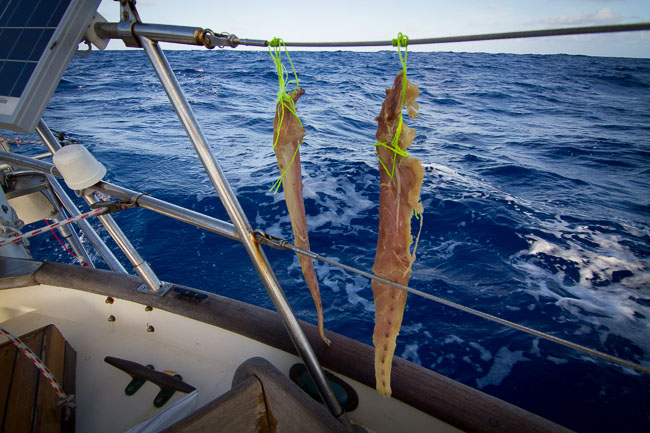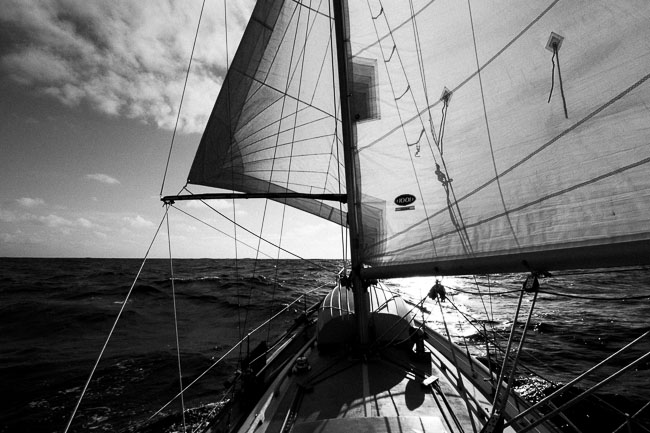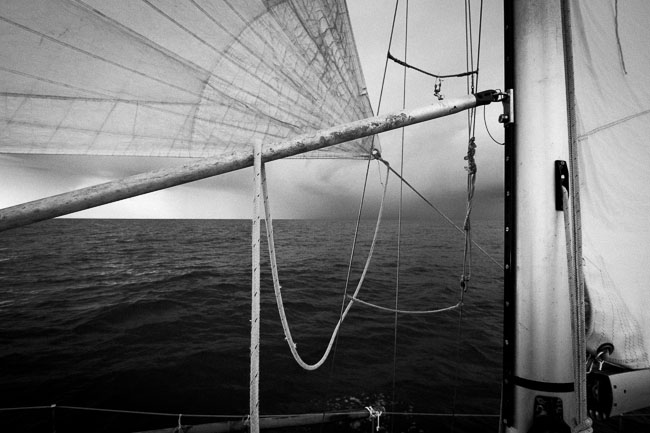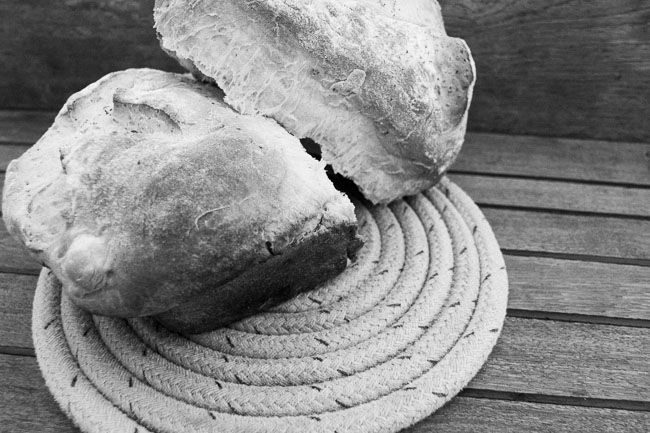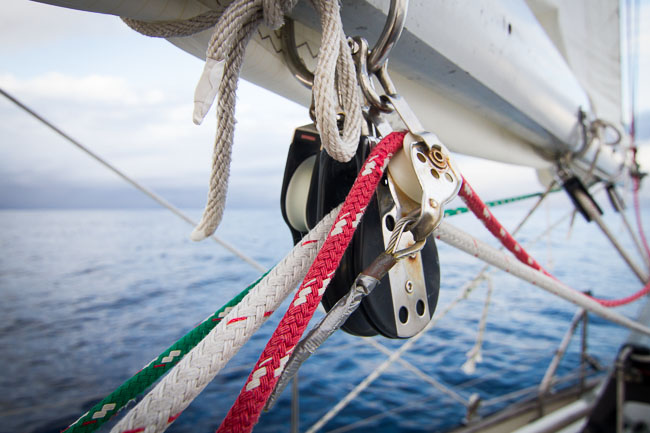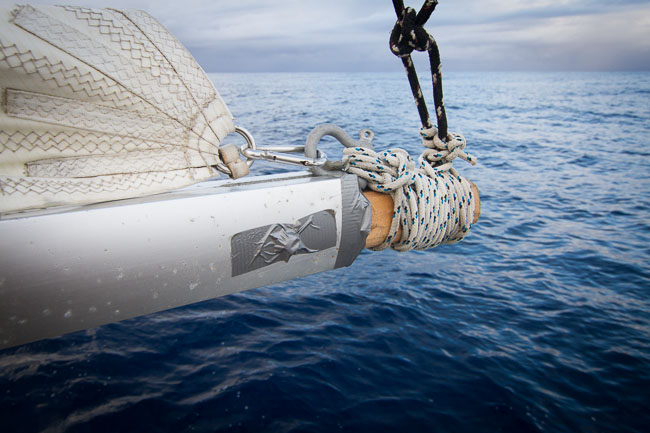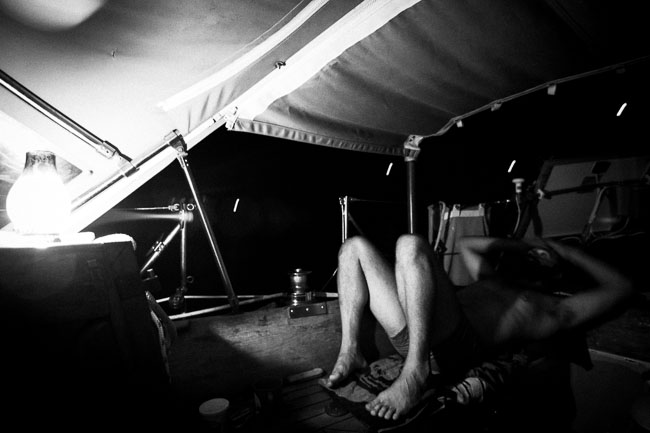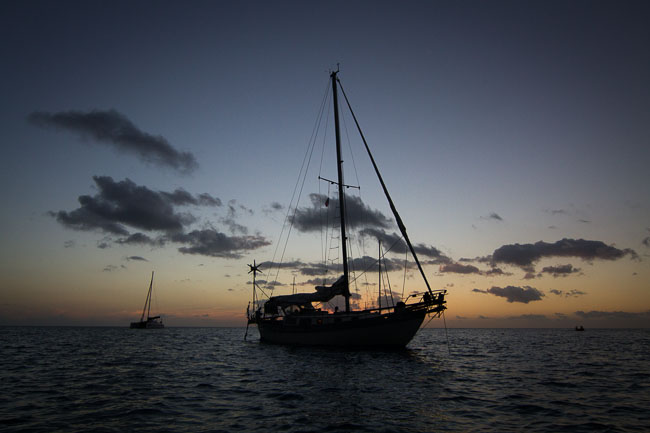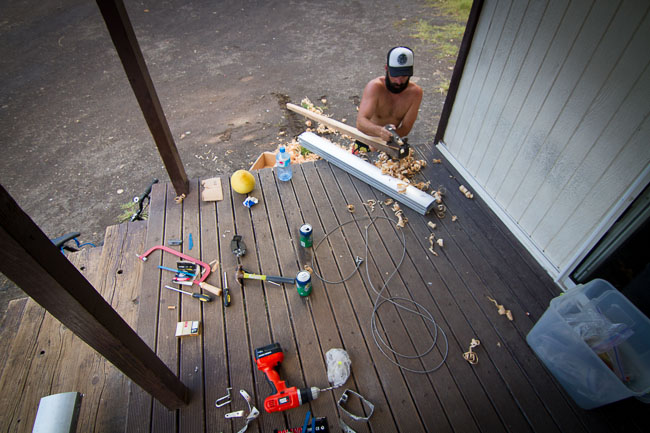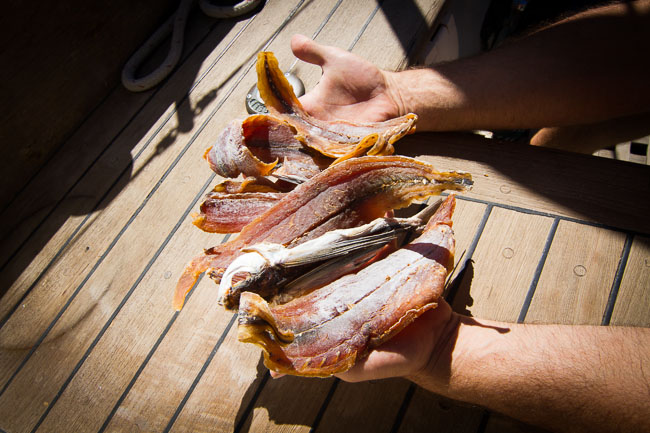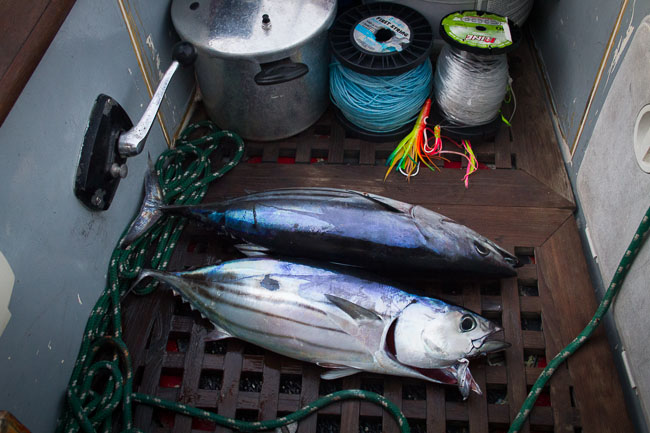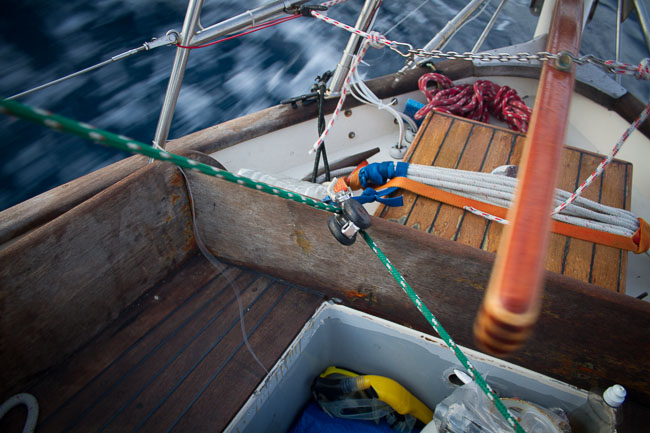Marquesas to American Samoa
We hauled anchor out of Hiva Oa, raised the mainsail, and keenly watched our repaired boom under full canvas. Was that flex? How much flex is too much flex? How strong is this wood boom compared to the original aluminium extrusion? Who knew. Powering downwind between Hiva Oa and Tahuata, we spotted a sailing boat in the distance, as it vanished into an inlet on the lee of the island. With good wind and several hours of daylight left, we decided to meander around the corner and see what the anchorage looked like. On approach the masts appeared, along with a small white beach lined in palm trees and crystal clear water in the foreground. This was the Marquesas we were looking for. After over a week of rain, a heaving anchorage, and a long row ashore, we simply had to stop.
With the anchor down in clean azure water, the anchor chain was visible and arched all the way to the sandy bottom. I jumped overboard for a swim. Any sailor worth his weight in bronze, is constantly on the lookout for anomalies. Checking, listening, watching parts move, halyards potentially chafing - a keen eye and ear for trouble. I swam around and checked the rudder. Two large cracks along the cheeks had made themselves apparent, and flexing the rudder by hand expanded the cracks. Unfortunately this was a fairly serious show-stopper. The three most important things when sailing, are to keep the mast up, the water out, and the rudder on. Making things even more difficult, we were now in a fairly remote anchorage without access to any parts. Chris and I discussed our options. Can we pull the entire rudder off underwater, haul it up on deck, and re-glass it? If not, what could we achieve with the boat in the water? We decided we needed large stainless rod, and some kind of flatbar to make a repair good enough for us to continue on.
Our new friends from Hiva Oa on SV This Boat, Jim & Amy, happened to turn up later in the morning, and I rowed over for a second opinion. Jim said 'I can give you as much help as you need, just let me know when' - tomorrow? Sure. But we needed stainless rod. Jim mentioned that Suzie, an Australian from another boat in the anchorage, would be returning from Hiva Oa via the cross-island ferry. We got a hold of Suzie's number, and texted her over the satellite phone. Yes! She would stop by the hardware store and pickup what we needed. Later that day, poor Suzie, who had been running around picking up things for everyone, arrived, holding the exact parts we needed in her hands. We woke up early, Chris had freshly baked bread ready, and I cooked our unrefrigerated bacon, scrambled eggs, and percolated coffee.
We spent the entire day in the cockpit with hand drills, tiny useless electric drills, blunt old bits, and hacksaws, making our repair. To get working room on the rudder, we placed Jim's dinghy on the bow, and filled it with water. This provided enough weight to lift the stern up high enough to work. Without the required flatbar, I scarified the windlass handle, sawed it in half, and completed the all-day repair. Fairly confident in our work, we weighed anchor the following day and set sail for the Tuamotos, halfway between the Marquesas and the atoll of Suwarrow.
Eyes on the boom. Was that flex? Eyes on the rudder. Is that crack expanding? No. We sailed on, becalmed just few days on. Bobbing around, books read, bread and brownies baked, the days drifted by, the mainsail slatted and banged - both damaging to sailor and to boat. Being peacefully adrift in the middle of the ocean, is one of favourite parts of any passage (granted the days don't turn into weeks!). We bobbed for a day and a half, the wind returned, strengthened, and gusted to 30 knots for two days. We howled downwind, fully reefed, a poled jib, and everything seemed to be holding up.
Fast asleep, the sure sound of breakage on deck. What have we lost now? The entire mast? Chris and I jumped up in seconds. The telescopic jib pole decided it wanted to collapse on itself, the jib flapped; nothing serious. The Tuamotos neared, only 60nm to the south. A strong SE wind was still blowing, and we pulled down a forecast to see how long it was supposed to last. The forecast showed strong winds for the next five days, and we desperately looked at our distance from sunny French atolls, and contemplated the alternative of solid wind onto Suwarrow. Being inside an atoll in strong wind is rarely pleasant, and we could make Suwarrow in 7 days with good wind. We changed course, and headed due west without stopping.
For days the wind blew, and we started doing our best 24 hour runs in terms of mileage - 120nm, 130nm, 140nm. One hundred short miles from Suwarrow, the wind backed, and I wondered if we would end up becalmed so close to paradise. However, the sun set, and 16kts of breeze appeared from nowhere. The following day, masts appeared in the lee of Suwarrow, and Harmony danced through the reef entrance inside the tight inner passage, and shortly our anchor was down once more.
After fourteen days at sea, we jumped in amongst the reef sharks and swam ashore. An imposing Cook Islander stood on pier Tom Neale allegedly built. He asked for our paperwork and to come ashore with passports. I was slightly taken aback - I hadn't mentally planned for immediate bureaucracy. I actually had no idea Suwarrow was a clearance port.
Coconut trees, swings, the 'Suwarrow Yacht Club', a book swap full of terrible paperbacks. A statue of Tom Neale, and cleanly swept sand paths. Charlie, the second ranger on the island handed us drinking coconuts, 'welcome to my island, this is my home'. It was his home, until he was 12. He even claims that Tom Neale was a fraud (spending only nine months on the island), a womaniser, and father of 29 children. I still don't know what to believe.
We swam, waited for the breeze to return for our departure, fished with Charlie for Wahoo and Tuna, visited outer Motus (the small islands inside the atoll reef), circumnavigated the tiny island by foot, collected fishing buoys, and for the first time on the voyage, had a moment to enjoy the hard work it had taken to get there. I arrived in San Francisco in May, and it feels like the work hasn't stopped since.
Today we are in American Samoa, re-provisioning, waiting for wind, and enjoying our brief stop amongst a people whom I think are the friendliest in the South Pacific.
Our next stop is Australia.
